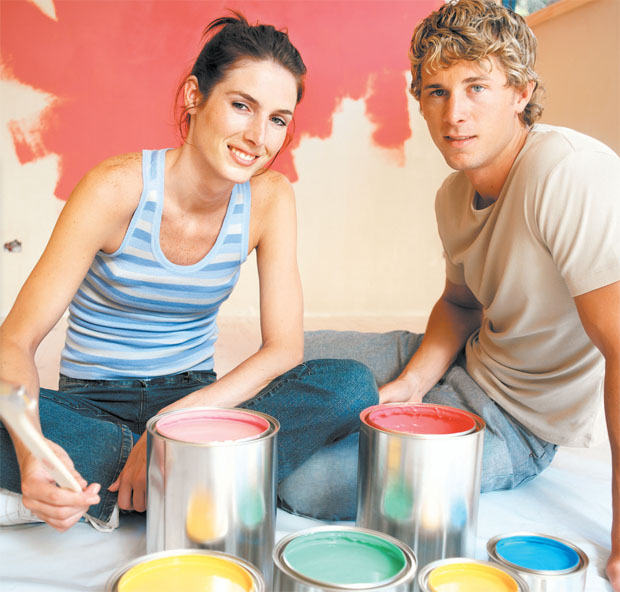When planning to paint a room, most people spend countless hours selecting a color. Once that decision is made, they spend far less time selecting paint brushes and rollers. Many DIYers don’t consider that choosing the right applicators is just as important as selecting the right paint color. Here are a few tips to help you identify the right tools for the job and make your next painting project your best yet.
Rule No. 1 — you get what you pay for
When selecting paint brushes and roller covers, don’t skimp on quality. A better-made brush is less likely to leave bristles and brush marks on your walls, ensuring you achieve a smoother, more professional-looking finish. A well-made brush may also cost a few dollars more, but can last over hundreds of painting jobs if taken care of correctly. Along the same lines, a cheap roller cover will leave lint on your walls embedded in the wet paint. If you leave the lint and let the paint set, you’ll definitely notice when the walls of your newly painted room look a bit fuzzy.
You’ll save yourself hours of time and lots of frustration by selecting higher-grade applicators, such as Marathon roller covers from Purdy.
Marathon leaves significantly less lint and is quite durable. One roller cover will last for your whole job and is great for painting larger rooms like a basement or garage.
Break out the brushes
Brushes are available in various sizes and for a variety of paints and stains. The most common size for home painting projects is a 2 1/2-inch brush. If you are working on painting smaller details, like baseboards, look at using a smaller size.

Rollout the rollers
In addition to investing in a good brush, you’ll also need a quality roller cover for walls and other large areas. When selecting a roller cover, pay special attention to nap, fabric type and size.
The thickness of the fabric — the nap — varies for each project type. The more texture you desire on the surface you are painting, the higher the nap should be. A 1/2-inch nap height is most common for use in the majority of homes, with nylon and polyester fabrics being the best for covering drywall. For an ultra-smooth finish, often desired in kitchens, bathrooms and living rooms, choose a 1/4-inch to 3/8-inch nap in a woven or microfiber fabric.
In addition to fabric and nap options, covers are also available in a variety of sizes: 9-inch width covers work well for full room projects and mini-rollers are great for painting small areas. Finally, roller covers may have different core sizes, so keep that in mind when purchasing roller frames.
If you still have questions about what’s the best applicator for your painting project, applicator manufacturers often have tool selectors available. Go online to check out the Purdy tool selector at www.purdy.com.

Other tools for your toolbox
It’s a good idea to have the following on hand before you crack open that first can of paint: spackle and a scraper for filling in nail holes and uneven areas; quality painter’s tape; stir sticks; a roller tray and liner; drop cloths for protecting your flooring, carpet and furniture — canvas works better than plastic; and a screwdriver, which can be used for removing paint can lids, outlet covers and switch plates.
To make sure your painting project goes as planned, be sure to take a little time selecting the best paint brushes and roller covers for the job. This will save you time and money in the long run. Start with the right tools and you’ll be painting like a pro in no time.
This article is courtesy of Brandpoint.
The basics of brush bristles
Be sure to consider the bristles! Stiffer, synthetic bristles work best with latex-based coatings, while softer, natural bristles are best for stains or oil-based products. There are also two styles of bristles — angled and flat. If working where the wall meets the ceiling, painting into corners or close to the trim, choose an angled brush. A flat brush is made to paint larger, level areas such as walls and doors.
This article is courtesy of Brandpoint.